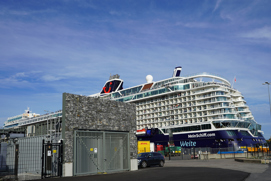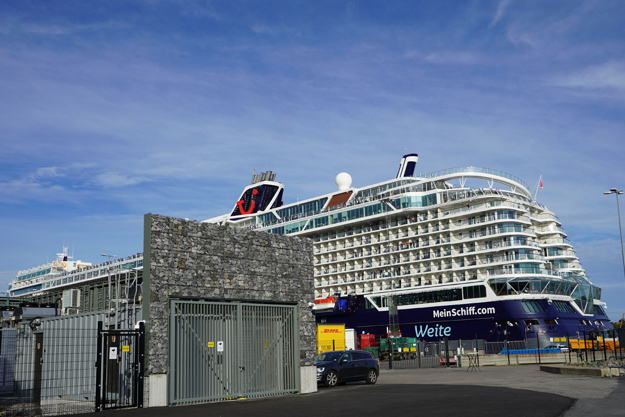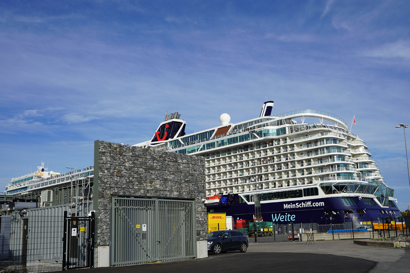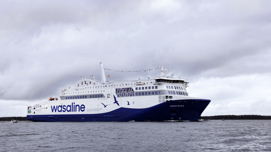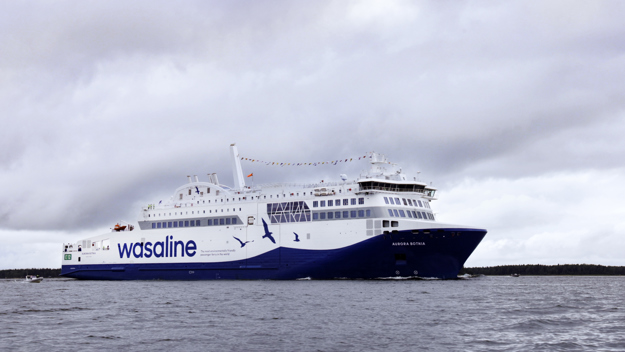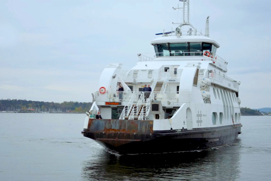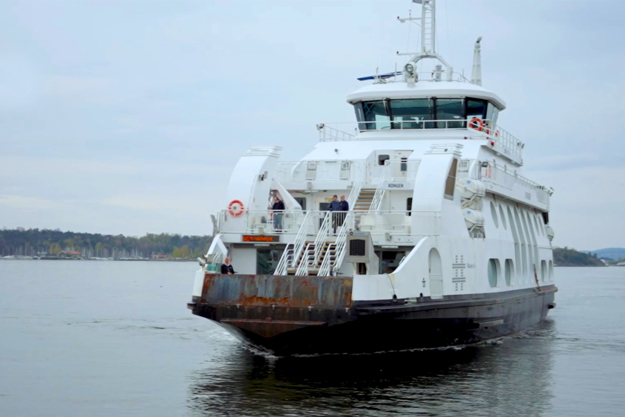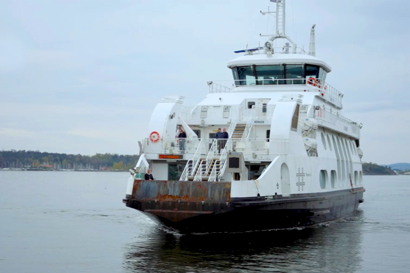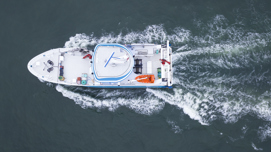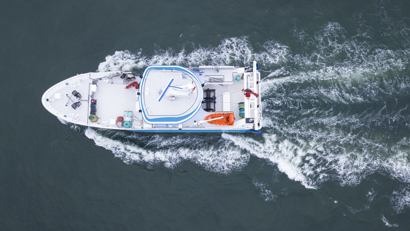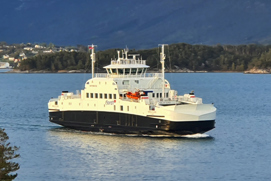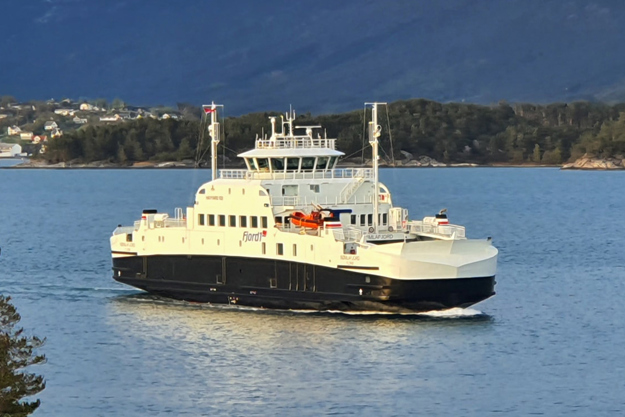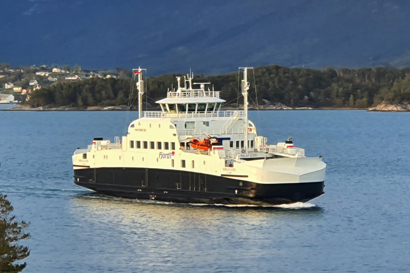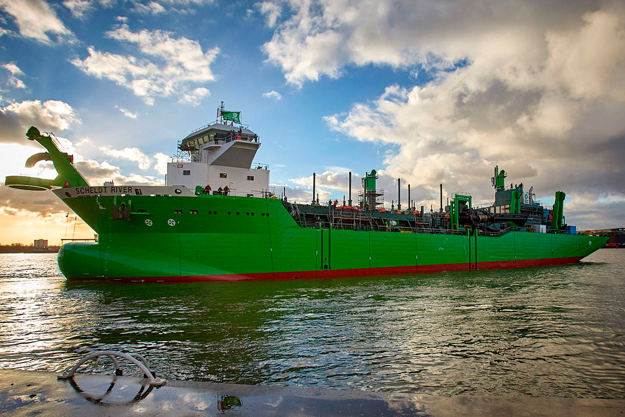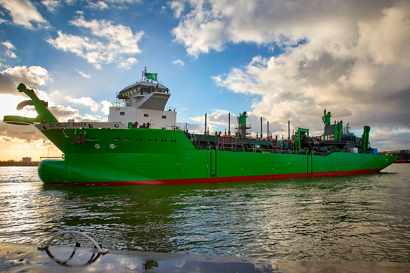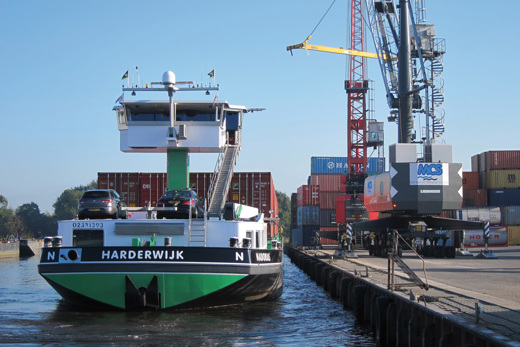
On board the MS Nadorias, the huge potential in converting to hybrid is no longer a vision but a reality. A hybrid retrofit has given this inland container carrier a huge 15% saving not only in fuel, but also in CO2 emission. Since the main diesel engine now runs much less, there is 60% less maintenance cost and higher uptime than for its identical sister ship.
For five years the MS Nadorias serviced the inland waterways of the Netherlands, powered by single diesel engine with a conventional direct drive to a single propellor. However an analysis showed that for 60% of the time the ship only needed a fraction of the full engine power. There was a big potential for fuel savings by converting to a diesel electric hybrid propulsion system with 2 smaller generators – and this potential has now been realized.
The brothers Dominic and Sebastiaan van der Meer and their business partner Edwin Groen who own the company together are very satisfied with the new propulsion system:
“We save more than 15% on fuel due to the hybrid propulsion system. The ship is travelling on the same route before and after the conversion and we have been able to compare the fuel consumption over a long period. The ship runs 98% of the time in electric mode and the crew has become very skilled in operating the ship in economy mode without the need for “full throttle”.
As another positive side effect, the ship is extremely quiet, because the two generators are located far away from the bridge and accommodation area. We went from a noise level of 60 dBA in the wheelhouse to just 42 dBA, which is really quiet.”
Compact solution
The retrofit had its challenges however. One of the main hurdles was finding space in the engine room.
Koedood Dieselservice BV and Hybrid Ship Propulsion BV (HSP) performed the retrofitting project. They solved the space problem by replacing the original main engine with a new compact system comprising new engine and a high torque shaft motor. The two new generators were placed in the bow of the ship and the electrical power was fed back to engine room at the stern through two new cables. The generators can run either as single units or in parallel.
Impressive benefits
The benefits of the conversion to hybrid are impressive:
- 15% reduction of fuel consumption, which results in both reduced greenhouse gas emissions and reduced fuel expenses
- 60% reduction in maintenance costs
- Less noise on board the vessel
- Demonstration of the effectiveness of hybridization in inland shipping
All power conversion installations
-
if (isSmallPicture) {


 PSW and Danfoss: Flexible onshore power for berthed cruise ships
PSW and Danfoss: Flexible onshore power for berthed cruise shipsNORWAY & SWEDEN: PSW (Power and Automation AS) paired up with Danfoss to create compact OPS solutions in three Nordic harbors: Stockholm, Ålesund and Haugesund/Karmsund.
-
if (isSmallPicture) {


 World’s first ferry powered by iC7-Marine: Aurora Botnia
World’s first ferry powered by iC7-Marine: Aurora BotniaFINLAND: The Aurora Botnia cargo and passenger ferry is equipped with a hybrid-electric propulsion system, powered by liquid-cooled iC7 drives from Danfoss.
-
if (isSmallPicture) {


 VACON® drives electrify passenger ferries in Oslo Fjord
VACON® drives electrify passenger ferries in Oslo FjordNORWAY: Electrification of the Nesodden ferries has reduced CO2 emission in the port of Oslo. VACON® drives and power converters play a key role onboard.
-
if (isSmallPicture) {


 Decarbonizing the next-generation training ship, Skulebas
Decarbonizing the next-generation training ship, SkulebasNORWAY: The new training vessel at Maløy Fishing School uses less diesel and emits less CO2, while also meeting the rigorous demands of the fishing industry.
-
if (isSmallPicture) {


 Where smart ferry charging begins with a smart grid
Where smart ferry charging begins with a smart gridNORWAY: The Hareid-Sulesund ferry operations have reduced CO2 emissions by 7000 tonnes annually with the introduction of electric vessels. In transitioning ferries from diesel to pure electric power, powerful onshore support is essential, in the form of reliable infrastructure for rapid charging capacity and stable grid supply. The systems on board and on shore act as a single system – a sophisticated and competitive system developed by Norwegian Electric Systems (NES) using Danfoss technology.
-
if (isSmallPicture) {


 Royal IHC Scheldt River pioneers new environmental standards in dredging with flexible MV drives
Royal IHC Scheldt River pioneers new environmental standards in dredging with flexible MV drivesA Danfoss medium-voltage drive solution boosts an inboard dredge pump and increases energy efficiency with a small footprint, minimum weight and low volume - while being robust enough to withstand the harsh marine environment.

